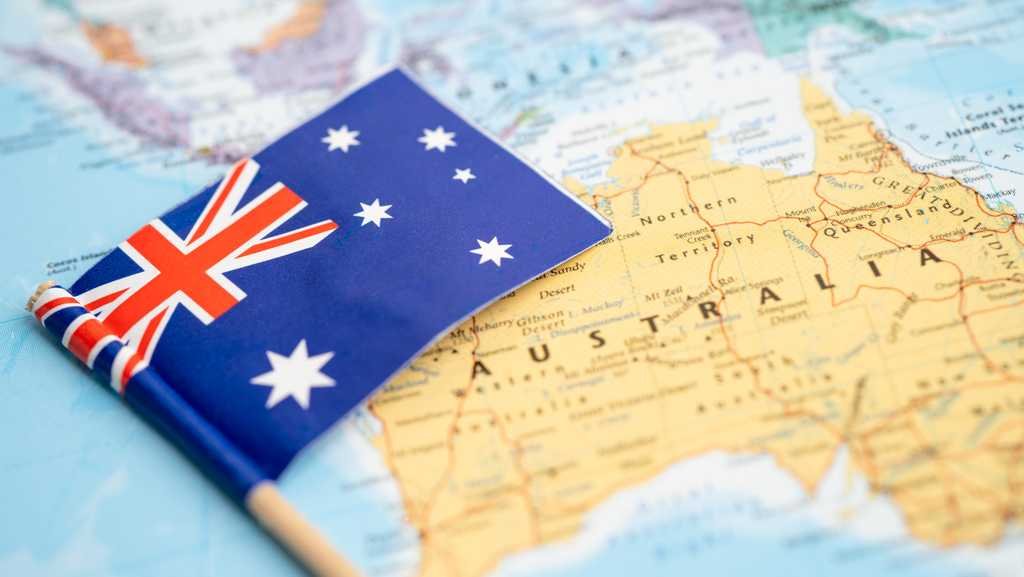Australia is one of the most popular destinations for international students, offering world-class education, diverse cultural experiences, and a high quality of life. If you’re considering studying in Australia, obtaining a student visa is a crucial step in your journey. The Australian student visa allows you to live and study in the country for the duration of your course, with opportunities for part-time work and the possibility of extending your stay.
This comprehensive guide will walk you through the entire process of applying for an Australian student visa, from choosing the right course and institution to submitting your visa application and preparing for your arrival in Australia.
Understanding the Australian Student Visa (Subclass 500)
The Australian student visa, known as Subclass 500, allows international students to study full-time in an accredited course at an Australian educational institution. This visa covers a wide range of study programs, including primary and secondary education, vocational education and training (VET), higher education, and English language courses.
Key Benefits of the Student Visa (Subclass 500)
- Study Full-Time: Enroll in a full-time course at an accredited Australian institution.
- Work Part-Time: Work up to 48 hours per fortnight during the academic term and unlimited hours during scheduled course breaks.
- Include Family Members: Bring eligible family members, such as your spouse and dependent children, to live with you in Australia.
- Pathways to Post-Study Work: After completing your studies, you may be eligible for a Temporary Graduate Visa (Subclass 485), which allows you to work in Australia.
Step 1: Choosing the Right Course and Institution
The first step in applying for an Australian student visa is to choose a course and institution that aligns with your academic and career goals. Australia offers a wide range of educational institutions, including universities, vocational colleges, and English language schools.
Researching Courses and Institutions
When selecting a course and institution, consider the following factors:
- Course Accreditation: Ensure that the course is accredited by the Australian government and recognized internationally.
- Institution Reputation: Research the institution’s reputation, including its ranking, faculty, facilities, and student support services.
- Location: Consider the location of the institution, including the cost of living, climate, and proximity to amenities and attractions.
- Course Content and Duration: Review the course content, structure, and duration to ensure it meets your academic and career objectives.
Confirming Eligibility
Before applying, check the entry requirements for your chosen course and institution. These requirements typically include academic qualifications, English language proficiency, and, in some cases, work experience.
- Academic Qualifications: Provide proof of your previous education, such as transcripts and certificates. The specific requirements vary depending on the course level (e.g., undergraduate, postgraduate, vocational).
- English Language Proficiency: Most institutions require proof of English proficiency through a recognized test, such as IELTS, TOEFL, or PTE. The required score varies depending on the course and institution.
- Prerequisite Courses: Some courses may have prerequisite subjects or qualifications. Ensure you meet these requirements before applying.
Step 2: Receiving a Confirmation of Enrolment (CoE)
Once you’ve chosen a course and institution, the next step is to apply for admission. If your application is successful, you’ll receive a Confirmation of Enrolment (CoE), which is a critical document for your visa application.
Applying for Admission
- Submit Your Application: Apply directly to the institution or through an authorized education agent. Ensure that all required documents, such as transcripts, English language test results, and a personal statement, are included.
- Pay the Application Fee: Most institutions charge an application fee, which varies depending on the course and institution.
- Wait for an Offer: If your application is successful, the institution will send you an offer letter outlining the course details, tuition fees, and conditions of acceptance.
Accepting the Offer
To accept the offer and secure your place in the course, you will need to:
- Pay the Tuition Deposit: Institutions typically require an initial deposit of tuition fees. This amount is usually specified in the offer letter.
- Meet Any Conditions: If the offer is conditional (e.g., subject to passing a final exam or providing additional documents), you must meet these conditions before receiving your CoE.
Receiving the Confirmation of Enrolment (CoE)
After accepting the offer and paying the required deposit, the institution will issue a Confirmation of Enrolment (CoE). This document includes important details such as the course start date, duration, and total tuition fees. The CoE is a mandatory requirement for your student visa application.
Step 3: Preparing for the Visa Application
With your CoE in hand, you can begin preparing your student visa application. This involves gathering the necessary documents, understanding the financial requirements, and ensuring you meet the health and character criteria.
Gathering Required Documents
To apply for a student visa, you’ll need to provide several documents that demonstrate your eligibility and intention to study in Australia:
- Valid Passport: Ensure your passport is valid for the entire duration of your intended stay in Australia.
- Confirmation of Enrolment (CoE): A copy of your CoE for each course you plan to study.
- English Language Proficiency: Proof of your English language test results (e.g., IELTS, TOEFL, PTE).
- Overseas Student Health Cover (OSHC): Evidence of health insurance that covers the entire duration of your stay in Australia. OSHC is mandatory for all international students.
- Financial Documents: Proof that you have sufficient funds to cover your tuition fees, living expenses, and travel costs. This may include bank statements, proof of income, or a financial sponsorship letter.
- Genuine Temporary Entrant (GTE) Statement: A personal statement explaining your intentions to study in Australia and return to your home country after completing your studies.
- Academic Transcripts and Certificates: Copies of your academic qualifications and transcripts.
- Passport-Sized Photographs: Recent passport-sized photographs that meet the visa application requirements.
Understanding Financial Requirements
To obtain a student visa, you must demonstrate that you have sufficient funds to cover your tuition fees, living expenses, and travel costs for the duration of your stay in Australia.
- Tuition Fees: You must show that you have enough funds to pay for the first year of tuition or the total course fees if the course is shorter than a year.
- Living Expenses: The Department of Home Affairs sets a minimum amount that you must have to cover living expenses. As of 2024, this amount is AUD 21,041 per year for a single student. Additional funds are required if you have family members accompanying you.
- Travel Costs: You must have sufficient funds to cover the cost of a return airfare to your home country.
Step 4: Submitting the Visa Application
Once you have gathered all the necessary documents, you can proceed to submit your student visa application online through the Department of Home Affairs’ ImmiAccount system.
Creating an ImmiAccount
- Register for an ImmiAccount: Create an account on the Department of Home Affairs’ ImmiAccount portal to begin your visa application.
- Complete the Online Application Form: Fill out the student visa application form (Form 157A) with accurate and up-to-date information. This includes personal details, course information, and details about your financial situation and health.
Uploading Documents
- Attach Required Documents: Upload all required documents, including your CoE, passport, financial documents, and English language test results. Ensure that all documents are clear, legible, and in the correct format (e.g., PDF, JPEG).
- Pay the Visa Application Fee: The visa application fee for Subclass 500 is approximately AUD 650. You can pay the fee online through the ImmiAccount portal.
Submitting the Application
- Review Your Application: Before submitting, review your application to ensure that all information is accurate and that you have attached all required documents.
- Submit the Application: Once you’re satisfied with your application, submit it through ImmiAccount. You will receive a confirmation receipt with a Transaction Reference Number (TRN), which you can use to track the status of your application.
Step 5: Health and Character Checks
After submitting your visa application, you may be required to undergo health and character checks to ensure you meet Australia’s immigration requirements.
Health Examinations
- Booking a Health Examination: If required, you’ll need to undergo a health examination conducted by a panel physician approved by the Department of Home Affairs. The examination typically includes a general health check, chest X-ray, and blood tests.
- Submitting Health Results: The panel physician will submit your health examination results directly to the Department of Home Affairs. You can track the status of your health assessment through your ImmiAccount.
Character Requirements
- Providing Police Certificates: You may be required to provide police clearance certificates from all countries where you have lived for more than 12 months in the past 10 years since turning 16. These certificates must be current and demonstrate that you have no significant criminal history.
- Completing the Character Declaration: As part of your visa application, you will need to complete a character declaration, confirming that you meet the character requirements set by the Australian government.
Step 6: Awaiting a Decision
After completing all necessary checks and submitting your application, the final step is to wait for a decision from the Department of Home Affairs. Processing times for student visas can vary, so it’s important to apply well in advance of your course start date.
Monitoring Your Application Status
- Tracking Your Application: You can track the progress of your application through your ImmiAccount using the Transaction Reference Number (TRN) you received when you submitted your application. The ImmiAccount portal will provide updates on the status of your application, including any requests for additional information.
Responding to Requests for More Information
- Additional Documentation: The Department of Home Affairs may request additional documents or information to support your application. It’s important to respond to these requests promptly to avoid delays in processing your visa.
- Health and Character Clarifications: If there are any issues or questions related to your health examinations or character assessment, you may be asked to provide further clarification or undergo additional tests.
Visa Processing Times
- Typical Processing Times: The processing time for an Australian student visa can vary depending on factors such as the time of year, the completeness of your application, and the country from which you are applying. On average, it takes between 4 to 12 weeks to receive a decision.
- Expedited Processing: In some cases, you may be able to request expedited processing if you have an urgent need to start your course on time. However, this is not guaranteed, and you should apply as early as possible to avoid the need for expedited processing.
Step 7: Visa Outcome and Next Steps
Once a decision has been made on your student visa application, you will be notified through your ImmiAccount. There are several possible outcomes, and it’s important to understand what each one means and what steps you should take next.
Visa Approval
- Visa Grant Notification: If your visa is approved, you will receive a visa grant notification through your ImmiAccount. This notification will include important information such as your visa grant number, visa conditions, and the start and end dates of your visa.
- Understanding Visa Conditions: Review the visa conditions carefully. Common conditions include maintaining enrollment in a registered course, maintaining Overseas Student Health Cover (OSHC), and meeting satisfactory course progress and attendance requirements.
- Arranging Travel to Australia: Once your visa is granted, you can start making travel arrangements. Ensure that you enter Australia before your course start date and adhere to any entry conditions specified in your visa grant notification.
Visa Refusal
- Understanding the Reasons for Refusal: If your visa application is refused, you will receive a notification outlining the reasons for the refusal. Common reasons include insufficient financial evidence, failure to meet English language requirements or concerns about your Genuine Temporary Entrant (GTE) status.
- Reviewing Your Options: Depending on the reason for refusal, you may be able to address the issues and reapply for the visa. Alternatively, you may have the option to appeal the decision or apply for a different type of visa.
- Seeking Professional Advice: If your visa is refused, consider seeking advice from a registered migration agent or legal professional to understand your options and the best course of action.
Step 8: Preparing for Arrival in Australia
With your visa granted, it’s time to prepare for your arrival in Australia. This involves making travel arrangements, understanding your rights and responsibilities as a student visa holder, and preparing for life in a new country.
Travel Arrangements
- Booking Flights: Book your flights to Australia, ensuring that you arrive in time for your course start date. It’s advisable to arrive a few weeks early to allow time to settle in and attend any orientation programs offered by your institution.
- Packing Essentials: Prepare a checklist of essential items to bring with you, including important documents (e.g., passport, visa grant letter, CoE), clothing suitable for Australia’s climate, and any personal items that will help you feel at home.
Settling in Australia
- Accommodation: Arrange temporary or permanent accommodation before you arrive in Australia. Options include on-campus housing, private rentals, homestays, or shared accommodation.
- Transportation: Research the public transportation options in your city of study, such as buses, trains, and trams. Some institutions also offer student discounts on transportation.
- Orientation Programs: Attend orientation programs offered by your institution to help you familiarize yourself with the campus, meet other students, and learn about the services and support available to you.
Step 9: Adapting to Student Life in Australia
Starting your studies in Australia is an exciting time, but it can also be challenging as you adapt to a new environment. Here are some tips to help you settle in and make the most of your experience.
Understanding Your Rights and Responsibilities
As an international student in Australia, you have certain rights and responsibilities that are important to understand:
- Visa Conditions: Adhere to the conditions of your student visa, including maintaining enrollment, achieving satisfactory course progress, and holding valid health insurance.
- Work Rights: If you plan to work while studying, be aware of the restrictions on working hours (up to 48 hours per fortnight during the academic term). Ensure that your employment does not interfere with your studies.
- Support Services: Take advantage of the support services offered by your institution, such as academic advising, counseling, and career services. These services can help you succeed academically and personally.
Managing Finances
Living and studying in Australia can be expensive, so it’s important to manage your finances carefully:
- Budgeting: Create a budget to manage your expenses, including rent, food, transportation, and entertainment. Stick to your budget to avoid financial stress.
- Scholarships and Financial Aid: Explore scholarship opportunities and financial aid options offered by your institution or external organizations. These can help reduce the financial burden of studying abroad.
- Banking: Open a bank account in Australia to manage your finances. Most banks offer student accounts with low fees and convenient access to funds.
Cultural Adjustment
Adapting to a new culture can take time, but embracing the experience will enrich your time in Australia:
- Cultural Differences: Be open to learning about Australian culture, including social norms, communication styles, and local customs. This will help you build relationships and feel more at home.
- Social Integration: Join student clubs, societies, and activities to meet new people and build a social network. Participating in campus life will enhance your experience and help you form lasting friendships.
- Exploring Australia: Take the opportunity to explore Australia’s diverse landscapes, cities, and cultural attractions. Whether it’s visiting the iconic Sydney Opera House, exploring the Great Barrier Reef, or enjoying a beach day, Australia has much to offer.
Conclusion
Applying for an Australian student visa is a multi-step process that requires careful planning, attention to detail, and timely action. By following this comprehensive guide, you can navigate the application process with confidence and increase your chances of success.
From choosing the right course and institution to submitting your visa application and preparing for your arrival, each step is crucial in ensuring a smooth transition to student life in Australia. Once you arrive, adapting to your new environment, managing your finances, and embracing the cultural experience will help you make the most of your time as an international student.
Studying in Australia offers a unique opportunity to gain a world-class education, experience a new culture, and build a foundation for your future career. With the right preparation and mindset, you can achieve your academic goals and enjoy a rewarding and enriching experience in one of the world’s most vibrant and welcoming countries.



